What is Myopia?
Myopia, commonly referred to as nearsightedness, is a disease where the eyeball is longer than normal and leads to the image being focused in front of the retina. The retina is the film lining the back of the eye and it is where the image should normally be focused.
Recent studies have shown that myopia is becoming increasingly common in children and teens with intense near work (usually screen time) thought to be a factor. One out of three school-age children has blurred vision. Catching early signs of myopia before it fully develops can help slow the onset and progression of myopia.

What Does My Child See?
A child with myopia can usually see things at near, but struggle to see things far away or at distance. This can make distance tasks more difficult, including seeing the board at school, playing sports, watching TV and movies. Most children with this condition will need vision correction such as eyeglasses or contact lenses to be able to see objects at far. It is important that myopia is diagnosed and managed early as it can get worse if it is left untreated and can affect how well children see and learn in school.

Does Myopia Get Worse?
Myopia can start developing in children as young as 3 years old. It tends to increase over time and can progress more quickly. Childhood myopia can increase the risk of eye conditions that can cause blindness later in life such as retinal detachment, glaucoma, macular degeneration and cataracts.
Myopic progression is greatest at a younger age & slows down with age. Patients who develop myopia as young children will have worse myopia than patients who develop this condition as older children or adolescents. Preventing & slowing down the progression of myopia not only keeps children's prescriptions low but also reduces the risk for ocular diseases so that their sight is protected for the future.
Why does my child have myopia?
There are many factors that can lead to myopia. Research currently suggests that myopia is largely associated with environmental or behavioral factors such as reduced time outdoors and increased amount of time spent on computer screens, phones, video games, and other digital devices. Family history of myopia can also increase the likelihood of developing myopia.
Spending more time outside & healthy outdoor activities, such as hiking, sports, or swimming will reduce the level of myopia. It is also essential to ensure they’re wearing sunglasses with proper UV protection to safeguard their eyes from harmful UV rays.

What are the symptoms of myopia?
Children are not always aware that they have a vision problem, which is why regular children's eye exams are so important. You may notice your child exhibiting symptoms of a vision problem yourself. If your child shows any of the following signs, schedule them for an eye exam as soon as possible.
- Squinting
- Sitting too close to the TV or at the front of the classroom
- Excessive blinking
- Frequent eye rubbing
- Unaware of distant objects
- Headaches
- Complaining of blurry vision
What can be done about it?
Myopia control prevents the progression of myopia by slowing the lengthening of the eye. While there is no cure for myopia, research has shown that we can slow the increase in myopia safely and effectively. An initial consultation is recommended with both parents and the patient. A detailed discussion is conducted which includes risk factor identification, lifestyle questionnaire (including how much near work and outdoor activity they engage in per day/week) & development of a personalized treatment plan. Some of the myopia control methods we may recommend are:
- Low Dose Atropine- Atropine eye drops have come out as one of the most effective myopia control options. Multiple studies have shown the higher the dose of atropine, the better the control. Atropine in higher doses dilates the pupil, but studies have also shown very low dosages (0.01-0.05%) can effectively slow myopic progression without bothersome side effects.
- Multifocal Contact Lenses- Studies have found that myopic children experienced less myopic progression with the help of special contact lenses, specifically multifocal contact lenses. When wearing multifocal contact lenses, some children experienced slower progression, as well as slower axial length growth.
- Eyeglasses- Executive bifocals or multifocals have been shown to slow myopia correction. If your child is hesitant about eye drop and contact lens options, this is a great alternative to get them started on myopia control therapy.
These treatments will not stop the myopia from increasing (as the child's eye still needs to grow naturally) but will slow the increase. The average treatment effect is 40 to 50% but some children may progress more or less than this.
Why it is important to control myopia in children.
Myopia control is important for children because the developmental years are when the eyes change the most. Slowing myopia is important as high levels of myopia can increase the risk of sight-threatening conditions in the future. Preventing higher myopia will also mean that your child will not have to wear thick spectacle lenses, which can be heavier and reduce cosmesis.
At Focal Sight Myopia Care, our team of ophthalmologist & optometrists will create a customized myopia control program based on your child's unique needs. We look forward to working with you to help control your child's myopia.
Call us at (032) 415 1052 to see how our eye doctors can help protect your child's eyes in order to see the world better.

